For humanity, freedom is a much sought-after state beginning early in childhood. Do you remember the first time you rode your two-wheel bicycle solo? The sense of accomplishment and independence was exhilarating. I still experience that rush of blissful joy whenever I go for a ride.
Freedom on the yoga mat equates as a similar experience. Although it can take many years of practice before this state of bliss emerges as our natural way of being, we can glimpse its essence in moments of concentration, absorption and integration (samyama). Samyama is the practice of coming to know something so completely that it reveals itself to you. That something could be your breath, your pelvic diaphragm, your quadricep muscle, yourself.
One could say that our capacity to concentrate single-mindedly (dharana) leads to a deeper ability to absorb (dhyana) that which we are focusing on. In the absorption process, we travel deeper into understanding ourselves and our experiences. Through this deeper felt experience, we learn to discern right action and then integrate (samadhi) these wise choices as our natural way of being in the world.
Dharana, dhyana and samadhi are the last three limbs of the eight-limb yoga practice. Many yogis are challenged to go beyond the physical practice of yoga (asanas or poses), and thus never experience the peace, love and joy that naturally emerge with deeper exploration. I know myself how attached one can get to achieving greater perfection in a pose or mastering the challenge of an advanced pose. Our earthly desires and ambitions can sweep us up and distract us from the true purpose of our yoga journey which is self-awareness and blissful contentment.
So, how can we maintain a physical practice of asana that also allows us to dig deeper into discernment and contentment? Just as it took all of our concentration to steer, balance and rotate the pedals of our first bicycle, focusing our awareness in a yoga practice allows us to learn what is required for personal healing and transformation to occur.
In each of the following poses, use your concentration to practice the yoga action described below. The longer holds in each posture allow you to meditate on your experience (absorption). Note your sensations, emotions and thoughts as you witness yourself in each pose. Finish with an extended Savasana of at least 5 to 10 minutes to allow your body and mind to integrate what you learned.
YOGA ACTION: The back edge of the pelvic diaphragm sits in front of the tailbone-sacral join. Taking your awareness to the back edge, inhale the breath into the tailbone-sacral join. Draw the breath along the left inner buttocks into the left outer hip. Exhale naturally, and notice what you experience. Repeat the next inhale along the right back edge of the pelvic diaphragm into the right outer hip. Again, notice your experience. Continue to direct your inhaled breaths along the left, then right, back edges of the pelvic diaphragm for the suggested lengths of time.
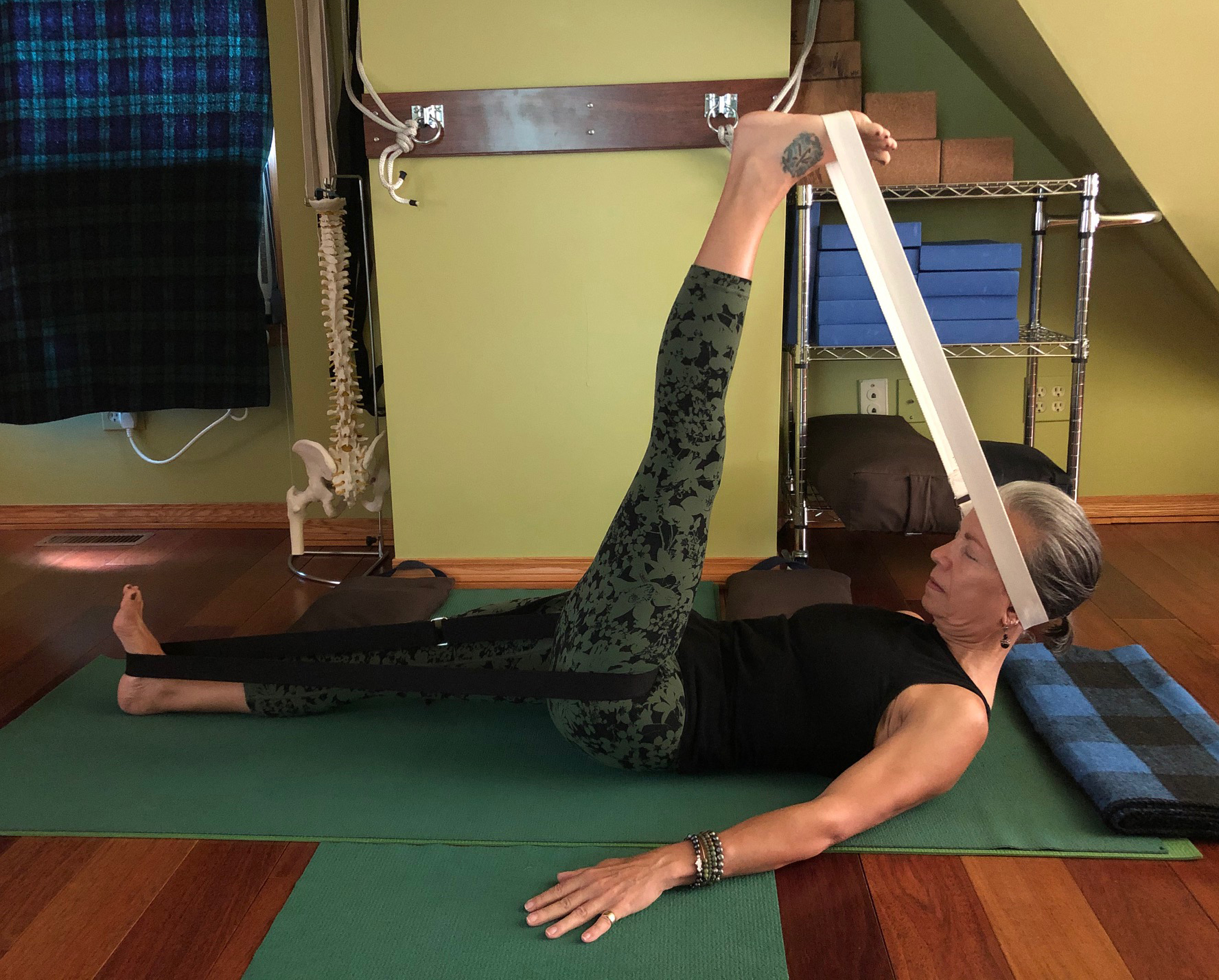
Double-belted Supta Pandangusthasana I (30 breaths/3 minutes each side)
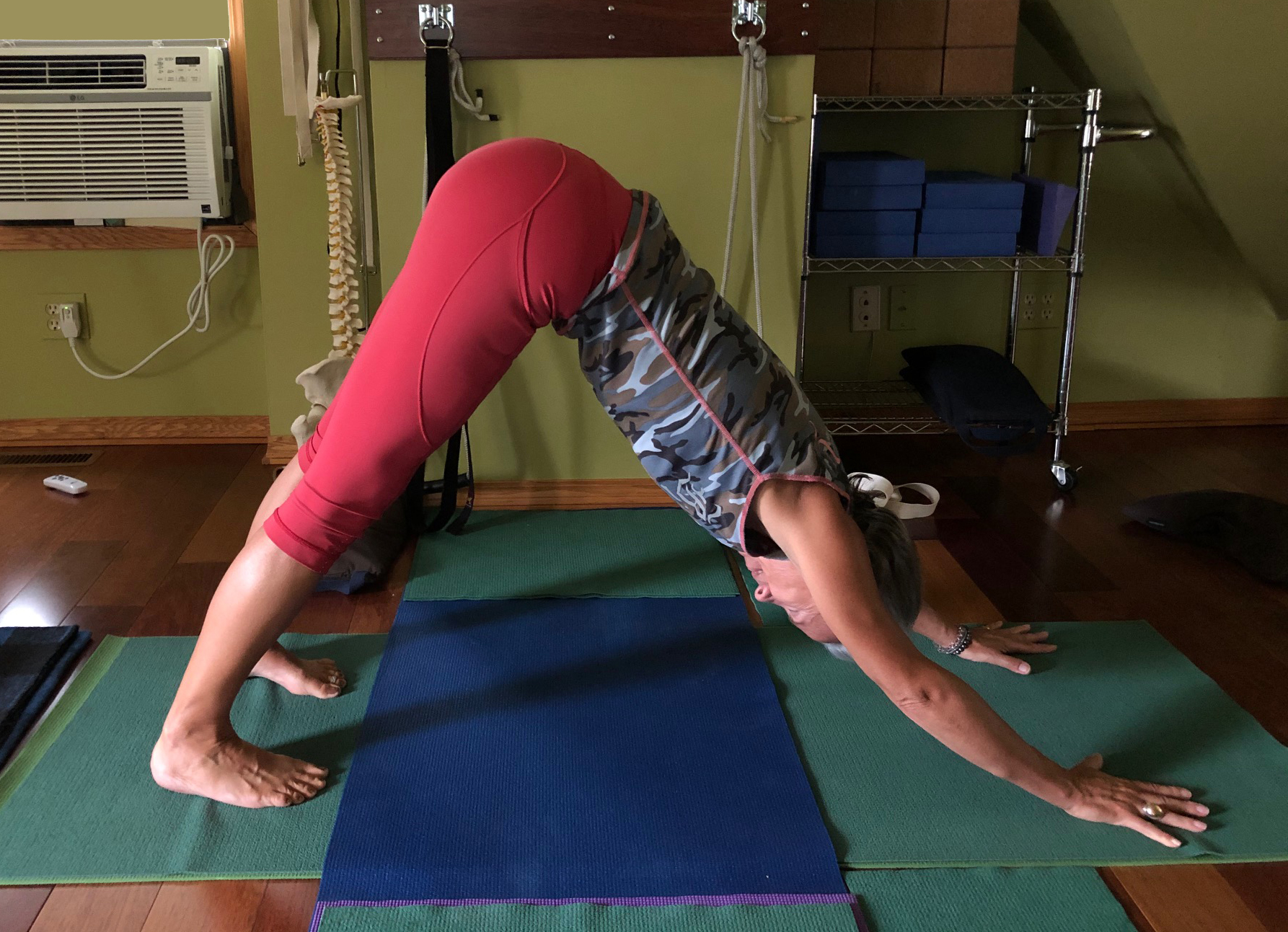
Adho Mukha Svanasana (10 to 20 breaths)
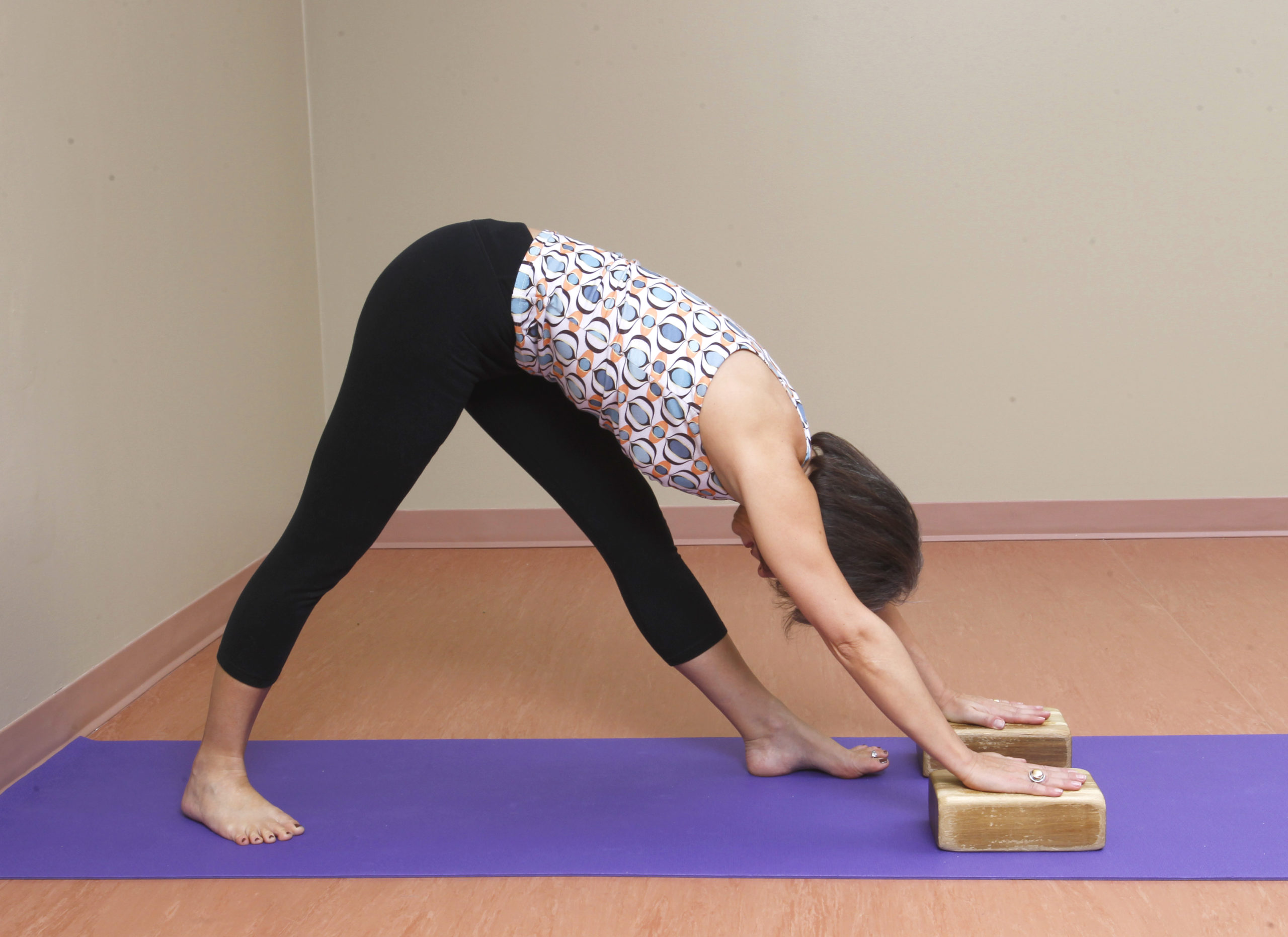
Parsvottanasana (10 to 20 breaths each side)
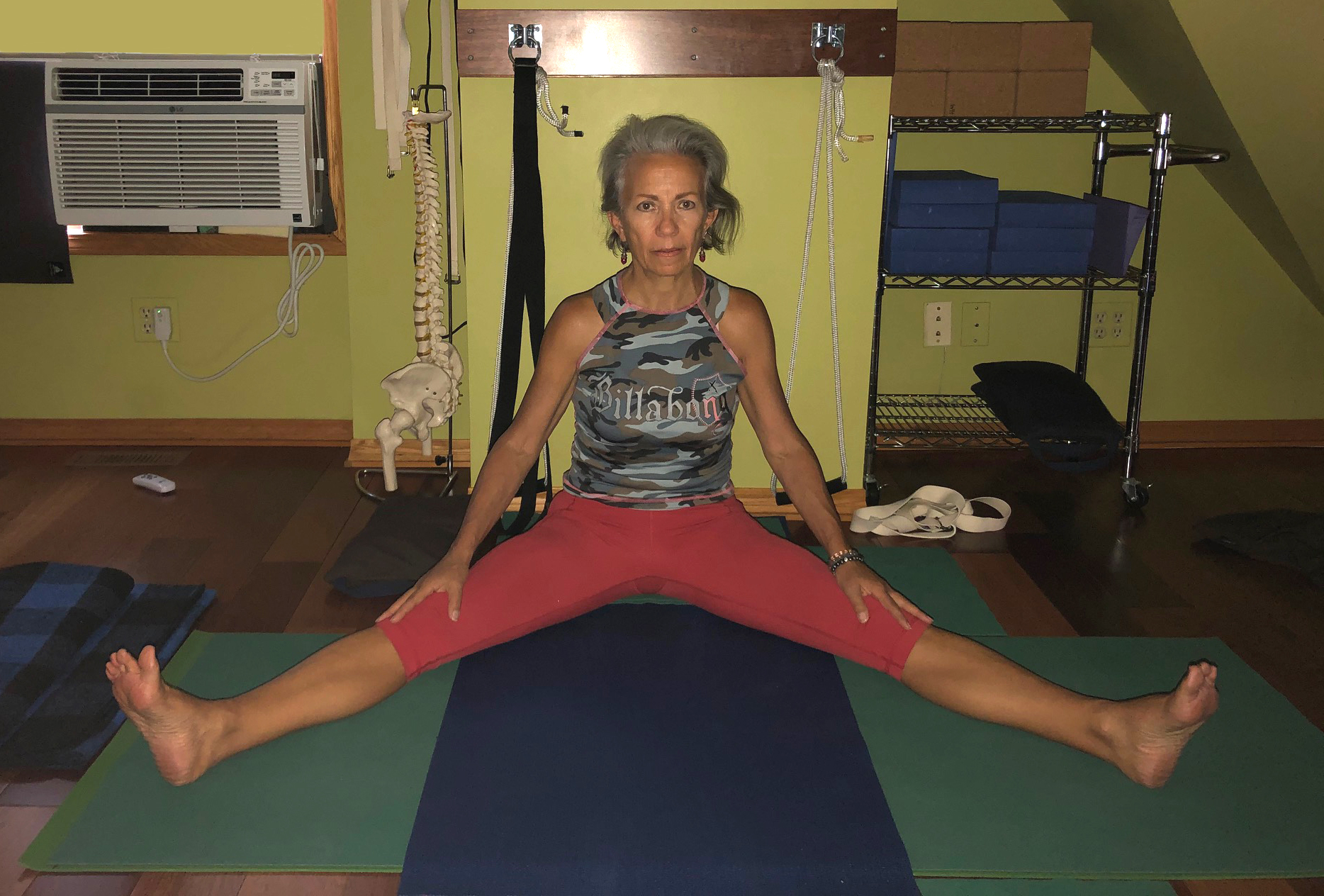
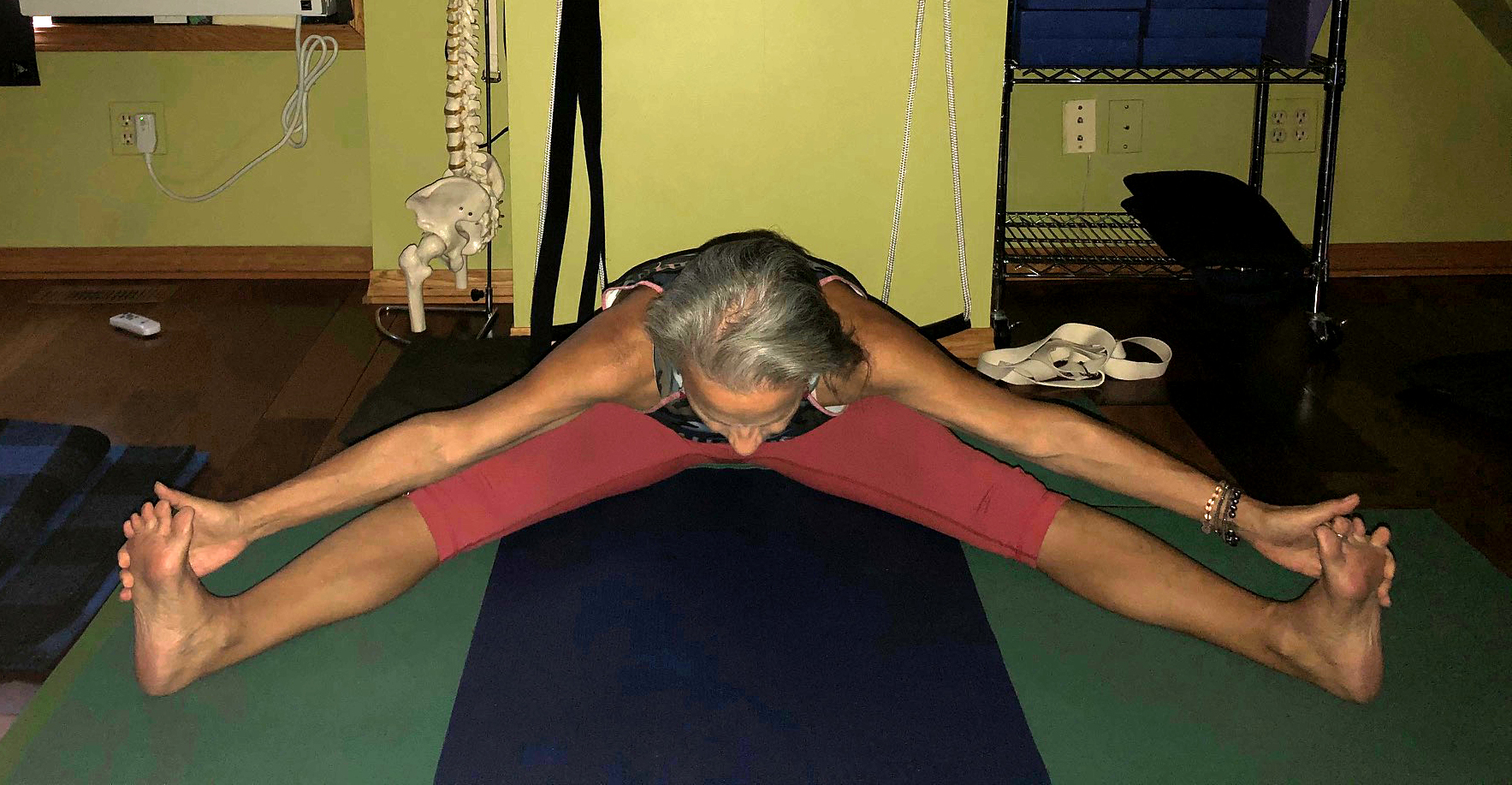
Upavistha Konasana (10 to 20 breaths)
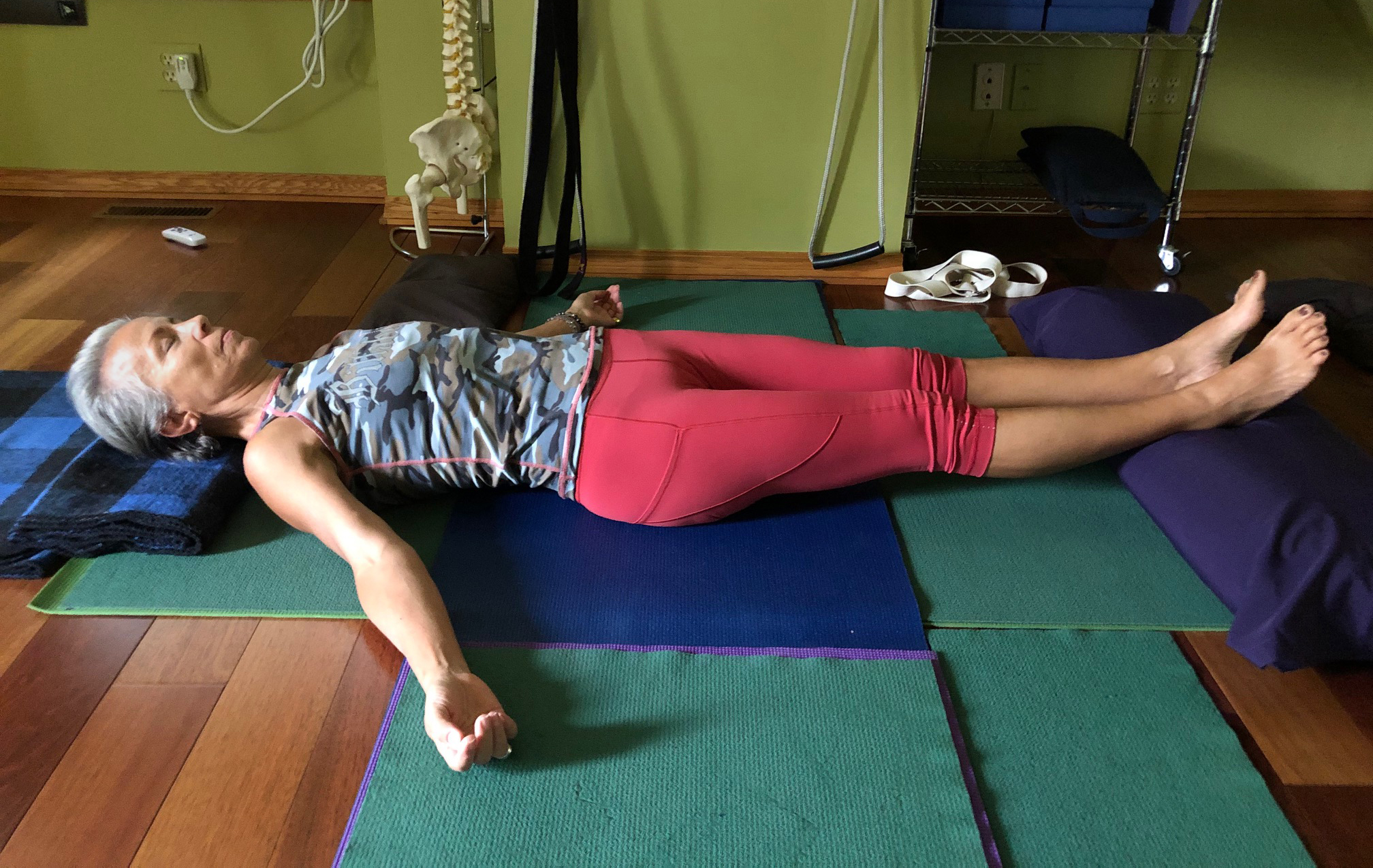
Savasana (10 minutes)
– ankles and heels supported; release the breath action




